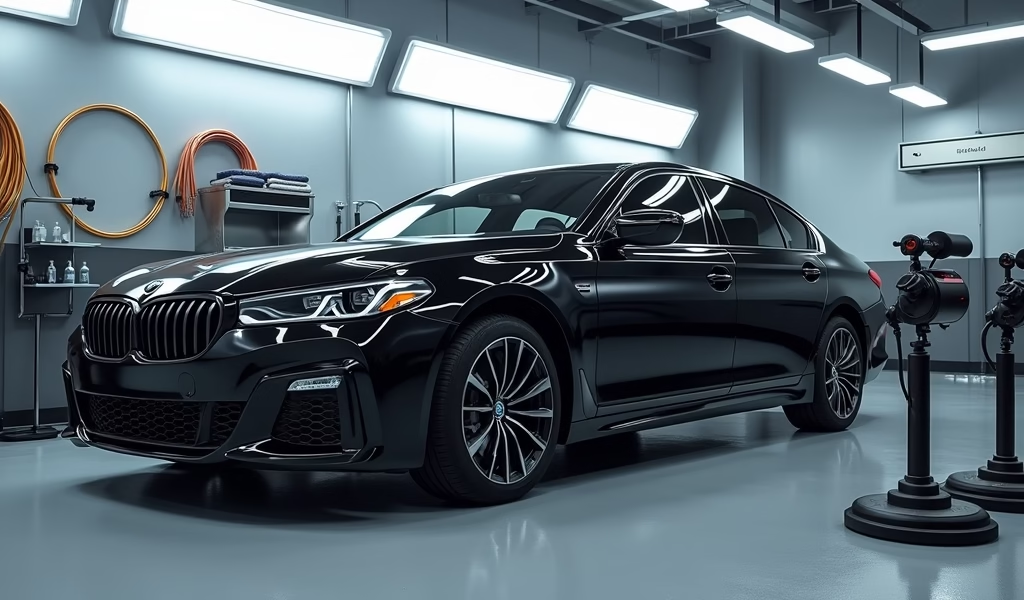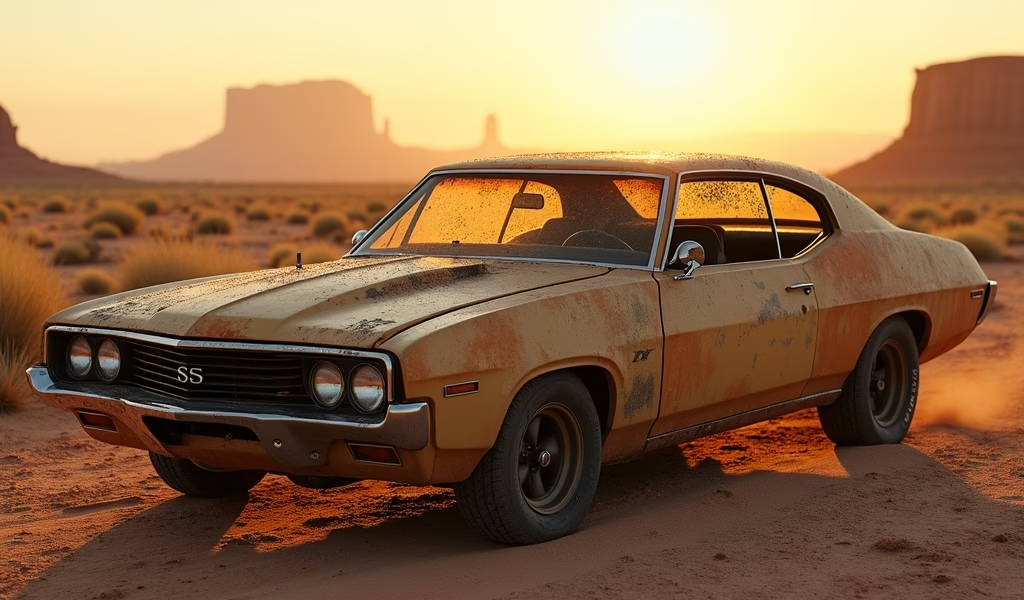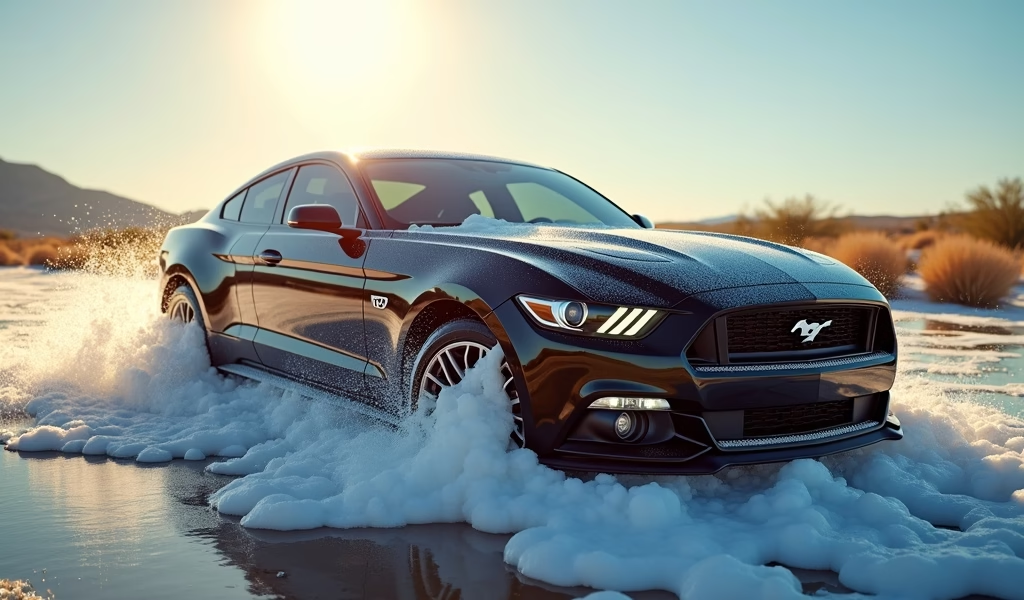Overview
This article provides detailed guidance for maintaining vehicles in Mesa’s harsh desert climate, including the two-bucket washing method, proper timing to avoid sun damage, and essential protection techniques like ceramic coatings. It emphasizes that regular car washing in Mesa is not merely cosmetic but critical preventative maintenance that preserves vehicle value against the unique challenges of intense UV radiation, dust, and hard water.
Table of Contents
- Why Regular Car Washing Matters in Mesa
- Choosing the Right Time of Day
- Mastering the Two-Bucket Washing Method
- The Top-Down Approach
- Proper Wheel and Tire Care
- Effective Drying Techniques
- Protecting Your Finish
- Local Car Wash Recommendations
- Conclusion
- Frequently Asked Questions
Why Regular Car Washing Matters in Mesa
Living in Mesa means your vehicle faces some seriously tough conditions. That relentless Arizona sun doesn’t just make your steering wheel too hot to touch – it’s slowly cooking your paint job too. Regular washing isn’t just about looking good in the neighborhood; it’s essential preventative maintenance in our harsh desert environment.
Mesa’s unique combination of intense UV radiation, fine dust particles, and hard water creates the perfect storm for vehicle finish degradation. That dust isn’t just unsightly – when wind blows it across your paint, it acts like microscopic sandpaper, creating tiny scratches that dull your finish over time.
What many Mesa residents don’t realize is that proper washing actually preserves your vehicle’s value. Cars that receive regular cleaning and protection can fetch hundreds, even thousands more at trade-in time compared to neglected vehicles. The proper car wash techniques don’t just keep your ride looking sharp – they’re protecting your investment.
Choosing the Right Time of Day
Timing your car wash in Mesa is critical. Wash your car under that midday sun, and you’re asking for trouble. Water droplets act like tiny magnifying glasses, concentrating heat on your paint and potentially causing water spotting and etching that’s difficult to remove.
The sweet spot for washing in Mesa is early morning (before 9 AM) or evening (after 6 PM). During these cooler hours, your cleaning products work as intended rather than flash-drying on hot surfaces. In summer when temperatures regularly exceed 110°F, consider pushing your washing routine even earlier or later.
If circumstances force you to wash midday, find shade or use a portable canopy. Your paint will thank you, and you’ll avoid the frustration of fighting water spots that seem to appear before you can even grab your drying towel. According to Consumer Reports’ automotive experts, washing in direct sunlight can reduce the effectiveness of cleaning products by up to 40%.

Mastering the Two-Bucket Washing Method
If you’re still using a single bucket to wash your vehicle, you might inadvertently be giving your paint the sandpaper treatment. The two-bucket method isn’t just professional detailer talk – it’s essential for preventing swirl marks and microscratches, especially in Mesa’s dusty environment.
Here’s the proper setup:
- Bucket #1: Filled with car wash soap and water
- Bucket #2: Filled with clean rinse water
- Grit guards in both buckets (these trap dirt at the bottom)
- High-quality microfiber wash mitt
The process is straightforward but effective: After wiping a section of your vehicle with your soapy mitt, rinse it thoroughly in the clean water bucket before reloading with soap solution. This simple step prevents contaminants from returning to your paint surface, dramatically reducing the risk of scratches.
You’ll be amazed (and perhaps horrified) by how quickly your rinse water darkens – that’s all material that won’t be dragged across your paint. For particularly dirty vehicles, you might even need to change your rinse water halfway through the process.
The Top-Down Approach
Gravity hasn’t changed since Newton’s day, and neither should your washing sequence. Starting at the top and working downward ensures that dirt and grime flow onto unwashed areas rather than recontaminating your freshly cleaned sections.
Begin with the roof, windows, and upper body panels. These areas typically collect less road grime but more environmental fallout and bird deposits. Use gentle horizontal strokes with minimal pressure – let the soap do the work, not force.
As you move to the mid-sections (doors, quarter panels) and finally to the lower areas (rocker panels, bumpers), you’ll encounter increasingly stubborn dirt. The lower portions of your vehicle collect road tar, brake dust, and various automotive fluids that can be particularly abrasive. Consider using a separate wash mitt for these lower sections to prevent transferring this grime to cleaner areas.
Don’t forget those easily overlooked spots like door jambs, around emblems, and the gas cap area. These nooks accumulate dirt and can ruin the look of an otherwise clean vehicle. In Mesa’s dusty environment, these areas need special attention after those occasional haboobs (dust storms) roll through.
Proper Wheel and Tire Care
Your wheels take more abuse than any other part of your vehicle. They face high temperatures, brake dust, road salts, and whatever else Mesa’s streets throw their way. Proper wheel cleaning isn’t just about looks – it prevents corrosion and extends the life of expensive alloy wheels.
Always start with wheels that are cool to the touch. Hot wheels can cause cleaners to spot or even damage finishes. Use products specifically formulated for your wheel type – what works for coated wheels might damage polished aluminum or chrome.
For Mesa’s particularly dusty conditions, a pH-neutral wheel cleaner works wonders on brake dust without harming wheel finishes. Apply with a soft wheel brush, being sure to reach behind spokes where brake dust loves to hide. Work on one wheel at a time to prevent products from drying in our heat.
For tires, choose a water-based dressing that provides UV protection – critical in our sun-drenched climate. Avoid silicone-heavy products that not only sling onto your freshly cleaned paint while driving but actually attract more dust to your tires – a particular problem in our desert environment.

Effective Drying Techniques
In Mesa’s climate, proper drying isn’t optional – it’s essential. Our notoriously hard water leaves mineral deposits that can etch into clear coats if allowed to air dry, creating spots that become increasingly difficult to remove over time.
Invest in quality microfiber drying towels with at least 400 GSM (grams per square meter) for maximum absorption. The “pat and drag” technique works best: lay the towel flat on the surface, press gently, then pull across in a single motion. This minimizes the risk of scratching while maximizing water removal.
For challenging areas like door jambs and crevices, a filtered compressed air tool or even a leaf blower on its lowest setting can safely force water out of tight spaces. This prevents the frustrating experience of water running down your freshly dried panels when you open doors or the trunk later.
Consider using a drying aid spray to enhance lubrication and add protection. These products make drying faster and safer while boosting gloss between waxings – particularly valuable in Mesa’s intense sun where protection breaks down more quickly than in milder climates.
Protecting Your Finish
In Mesa’s intense UV environment, washing alone isn’t enough – protection is non-negotiable. Think of it as sunscreen for your vehicle; without it, paint oxidation happens with alarming speed.
For beginners, a quality synthetic wax offers excellent protection with straightforward application. Apply every 2-3 months to maintain a defensive barrier against Mesa’s harsh elements. Look for products with UV inhibitors specifically formulated for extreme heat environments.
Those seeking longer-lasting results should consider polymer sealants, which provide 4-6 months of protection with greater durability and heat resistance than traditional waxes – a significant advantage in our climate. Many professional detailers at the best car wash in Phoenix area use these products for their superior performance in desert conditions.
For ultimate protection, ceramic coatings create a semi-permanent bond with your paint, offering 1-5 years of protection depending on the product. While professional application yields best results, consumer-grade ceramic coatings have become more user-friendly in recent years. The initial investment pays dividends in reduced maintenance and superior protection against our punishing sun.
Local Car Wash Recommendations
When time constraints prevent DIY washing, knowing where to take your vehicle becomes crucial. Mesa offers several excellent options for different needs and budgets.
For self-service, Clean Freak Car Wash on Southern Avenue provides well-maintained bays with quality pressure washers and reasonable rates. Their filtration system helps minimize water spotting – a significant advantage given Mesa’s hard water. The facility is well-lit for evening washing when temperatures drop.
When you need professional attention, Cobblestone Auto Spa on Power Road offers various packages from basic washes to comprehensive detailing. Their attention to detail and careful hand drying set them apart from typical automated washes. Their ceramic coating packages provide exceptional long-term protection against our harsh sun.
For those seeking premium service, Washtopia near Superstition Springs offers thorough hand washing and meticulous attention to detail. Their monthly membership programs provide excellent value for Mesa residents committed to regular maintenance. Their detailers understand the unique challenges of desert car care and adjust their techniques accordingly.
Conclusion
Caring for your vehicle in Mesa’s unique climate requires more diligence than in many other regions, but the results are worth the effort. By implementing these seven proven detailing tips, you’ll not only maintain your car’s appearance but also protect its value and extend the life of its finish.
Remember that consistency trumps perfection – regular maintenance prevents the need for more intensive corrections down the road. Even implementing just a few of these techniques will yield noticeable improvements in your vehicle’s appearance and longevity in Mesa’s challenging environment.
Whether you’re preserving a new car’s finish or rejuvenating an aging paint job, these techniques provide a roadmap to success in our Valley of the Sun. With the right approach, your vehicle can maintain that showroom shine despite whatever Mesa’s climate throws its way.
Frequently Asked Questions
What’s the best time to wash my car in Mesa?
Early morning (before 9 AM) or evening (after 6 PM) when temperatures are cooler. This prevents water spots and allows cleaning products to work properly without flash-drying.
How often should I wash my car in Mesa’s climate?
Once every 1-2 weeks during normal conditions, more frequently during dust storm season. Regular washing prevents contaminants from bonding to your paint and causing permanent damage.
Are automatic car washes safe for my vehicle?
Touchless automatic washes are safer than those with brushes, but hand washing is best. Brush-type automatic washes can create swirl marks and microscratches in your paint.
What’s the best protection against Mesa’s intense sun?
Ceramic coatings provide the longest-lasting protection against UV damage. For more affordable options, synthetic polymer sealants offer excellent protection and should be applied every 3-4 months.
How can I prevent water spots in Mesa’s hard water conditions?
Dry your vehicle immediately after washing using quality microfiber towels. Consider using distilled water for a final rinse or a drying aid product that provides lubrication and protection.

